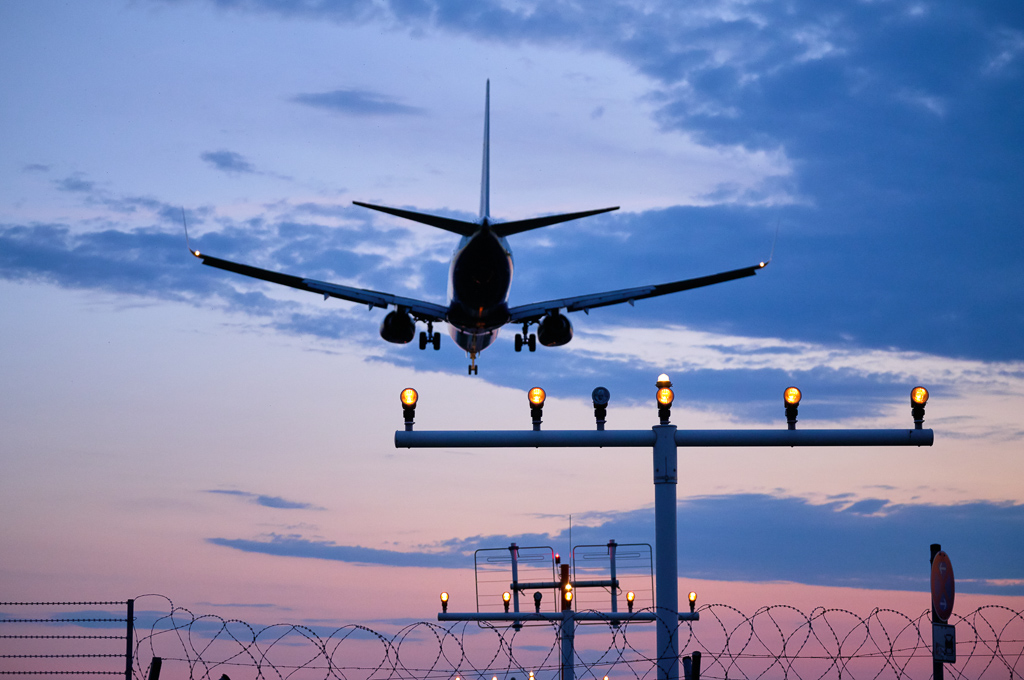← Back to home

Landing approaches: types and explanations of each
Author: Команда X-Shop • 11/11/2025 • 90 views
📋 Introduction
An instrument approach is the final phase of flight where the aircraft descends and aligns for landing on the runway. In modern aviation, there are several types of approaches that differ in equipment used, precision, and minimum weather requirements.
Let's break down the main types of approaches in simple terms.
👁 1. Visual Approach
What it is:
The simplest type of approach — the pilot sees the runway with their eyes and lands by visual reference.
How it works:
Pilot looks out the window and directs the aircraft to the runway
No special equipment required
Used in good weather
When it's used:
Excellent visibility
Day or night (with good airport lighting)
No clouds on the way to the runway
💡 In simple terms:
It's like parking a car — you see the spot, drive there, and park.
📡 2. ILS (Instrument Landing System)
What it is:
The most common precision approach system. Ground-based radio beacons create a "corridor" for the aircraft.
How it works:
Localizer (LOC) — shows left-right deviation from runway centerline
Glideslope (G/S) — shows up-down deviation from proper glidepath (usually 3°)
Pilot (or autopilot) monitors the needles and keeps them centered
📊 ILS Categories:
CAT I — can land with visibility from 550m and cloud height from 60m
CAT II — visibility from 300m, cloud height from 30m (autopilot required)
CAT III — can land almost blind (CAT IIIC — with no visibility at all)
💡 In simple terms:
Imagine there's an invisible tube leading to the runway. The aircraft flies through this tube, and instruments show if it's drifting from the center.
🛰 3. RNAV/RNP (GPS Approaches)
What it is:
Modern approaches based on GPS/GNSS satellite navigation.
How it works:
Aircraft knows its precise position via GPS
Flight path is stored in the database (like a route in a navigator)
Autopilot or pilot follows this trajectory
📱 Types:
RNAV (GNSS) — basic GPS approach, non-precision (like NDB/VOR)
RNP APCH — more accurate, with navigation accuracy monitoring
RNP AR — super precise, allows complex maneuvers in mountains
✅ Advantages:
No ground-based radio beacons needed
Can create curved trajectories (avoid mountains, cities)
Works anywhere GPS is available
💡 In simple terms:
Like a car GPS navigator — satellites know where you are and guide you along the right route to the runway.
📻 4. VOR/DME Approach
What it is:
Approach using ground-based VOR (direction) and DME (distance) radio beacons.
How it works:
VOR transmits radials (beams) in all directions
Aircraft tunes to the required radial and flies along it
DME shows distance to the beacon
Pilot descends according to the procedure at specific points
💡 In simple terms:
Like following a compass: "Go north for 5 kilometers, then turn east." VOR is the compass, DME is the pedometer.
🔊 5. NDB Approach
What it is:
Old system using non-directional beacons.
How it works:
NDB transmits radio signal in all directions
ADF needle on aircraft always points to the beacon
Pilot corrects course, accounting for wind
⚠️ Disadvantages:
Imprecise system
Susceptible to interference (thunderstorms, mountains)
Becoming obsolete and gradually being phased out
💡 In simple terms:
Like walking toward a sound — you hear where the bell is ringing and walk there. But if wind pushes you sideways, you might miss it.
🎯 6. LPV (Localizer Performance with Vertical Guidance)
What it is:
GPS approach with vertical guidance — "GPS version of ILS."
How it works:
Uses GPS + SBAS augmentation system (WAAS, EGNOS)
Provides accuracy close to ILS CAT I
Shows both horizontal and vertical deviation
⭐️ Advantages:
No ground ILS needed
Almost as accurate as ILS
Cheaper to install for airports
💡 In simple terms:
Enhanced GPS approach that works almost as accurately as ILS but doesn't require expensive ground equipment.
🚀 7. GLS (GBAS Landing System)
What it is:
Newest landing system based on GPS with ground correction station.
How it works:
Ground station corrects GPS signal
Accuracy higher than ILS
Can replace ILS CAT II/III
🔮 Status:
Not yet widely deployed
Used at some major airports
Future of aviation
💡 In simple terms:
Super-precise next-generation GPS approach that can work even in very bad weather.
📞 8. PAR (Precision Approach Radar)
What it is:
Ground controller sees the aircraft on radar and verbally tells the pilot where to fly.
How it works:
Controller: "You're slightly right, turn 2 degrees left"
Controller: "You're above glidepath, increase descent"
Pilot follows commands
🎖 When it's used:
Military aviation
Emergency situations
Aircraft equipment failure
💡 In simple terms:
Like when a friend helps you park: "A bit more back... stop... slightly left..."
✈️ Conclusion
Modern aviation uses multiple approach systems — from simple visual to high-precision automatic systems. The choice of system depends on:
🌦 Weather conditions
🏢 Airport equipment
✈️ Aircraft equipment
👨✈️ Crew qualifications
📈 Trend: Aviation is gradually transitioning from ground-based radio beacons (VOR, NDB, ILS) to satellite systems (RNAV, LPV, GLS) — they're cheaper, more flexible, and accessible for remote airports.
Летаем правильнополезная инфаX-Shop